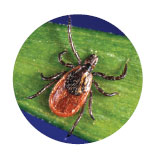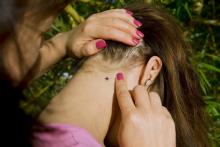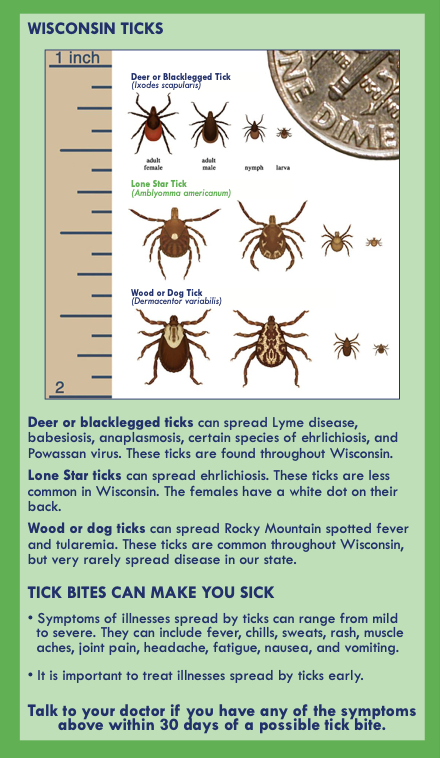Cases of Tickborne Illnesses on the Rise in Recent Weeks
- Share
- Tweet
- Pin
- Share
Door County Public Health issued a press release late afternoon June 29 regarding tickborne illnesses in Door County. Read the full release below.
Ticks are currently active in Wisconsin, and in recent weeks, there have been a higher than average number of cases of illnesses spread by ticks reported to Door County Public Health. In particular, there have been six cases of anaplasmosis reported among Door County residents so far this year, compared to an average of <1 case per year in the previous five years. Several of the recent cases have resulted in hospitalization.
Anaplasmosis is caused by the bacterium Anaplasma phagocytophilum and is spread to people through the bite of an infected deer tick. Symptoms of anaplasmosis commonly include fever, chills, severe headache, muscle aches, nausea, and vomiting. Like most other diseases spread by ticks, anaplasmosis can be treated effectively with an antibiotic. If left untreated, however, anaplasmosis can sometimes develop into a more serious illness that may include respiratory failure, bleeding problems, organ failure, or death. Timely diagnosis and treatment of anaplasmosis and other diseases spread by ticks can prevent severe illness.

The most common tickborne diseases in our area include Lyme disease and anaplasmosis, both spread by the bite of a deer tick, and Ehrlichiosis, spread by the bite of a deer tick or a lone star tick. In many instances, it is the small, immature deer tick, called a nymph, that spreads illnesses because it is more likely to remain undetected. Deer tick nymph populations commonly peak in June in Wisconsin, but ticks that spread diseases continue to be active throughout the summer and into fall months.
It is important to be aware of ticks and take steps to protect yourself. To prevent all illnesses spread by ticks:

• Be quick to remove any ticks. Check for ticks after outdoor activities including in your own yard but especially after walking through high grass and heavily wooded areas. If you find a tick on your skin, remove it immediately to prevent infection by grasping with tweezers, and pull upward. The tick must be attached for 12-24 hours before bacteria can be transmitted.
• Use effective insect repellents and apply according to the label instruction. Use insect repellents with 20-30% DEET, 10–20% Picaridin, 15–20% IR3535, or 30–40% oil of lemon eucalyptus on exposed skin and clothes to prevent tick bites. Permethrin is also effective against ticks and lasts for days to weeks but should only be applied to clothes and not directly to the skin.
• Wear long sleeves, long pants, and long socks to keep ticks on the outside of clothing. Light colored clothing will help you spot ticks.
• If possible, avoid wooded and bushy areas that contain high grass and leaf litter. If you do go into wooded areas, stay in the center of a cleared trail to avoid contact with overgrown grass, brush, and leaf litter.
• If you develop a rash, fever, headache, muscle pain, malaise, chills, nausea/ abdominal pain or other symptoms you think are from an insect bite, see your doctor. Symptoms may begin up to 30 days after exposure.

Visit the Wisconsin Department of Health Services https://www.dhs.wisconsin.gov/tick/bite-prevention.htm or the CDC https://www.cdc.gov/ticks/index.html for more information.



